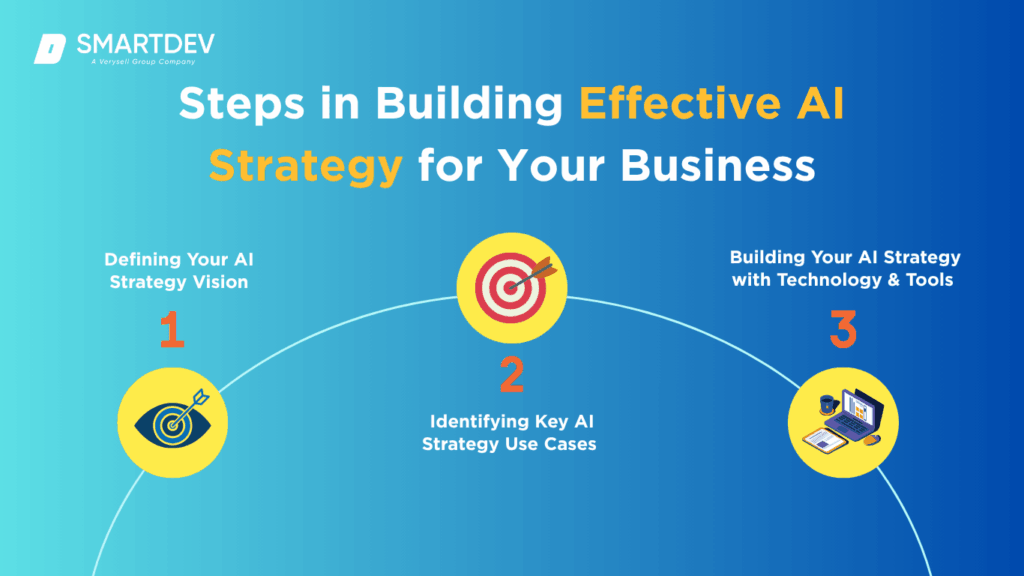In today’s rapidly evolving digital landscape, AI is no longer a luxury but a necessity for businesses aiming to stay competitive. However, building an AI strategy that leads to meaningful transformation requires more than just adopting new technologies. It requires a thoughtful, comprehensive approach. This guide will walk you through the key elements of creating an effective AI strategy that drives long-term business success, with valuable insights from AI expert Sana Zia Hassan – our Ctrl Shifter Podcast’s guest speaker.
Introduction to AI Strategy
An AI strategy serves as the blueprint for incorporating artificial intelligence into your business processes, products, and services. It’s not simply about using AI tools or technologies; it’s about leveraging AI to solve business problems, drive innovation, and create sustainable value. AI can transform industries, but only when it’s aligned with the business’s overarching goals.
Sana Zia Hassan, Senior Manager at EY in AI and Data, emphasizes the importance of aligning AI with business objectives. She points out, “Amazing AI solutions can often sit on a shelf not just because they don’t work, but because they weren’t connected to a real business need or a clear vision from leadership.” This highlights the significance of having a clear AI strategy that connects with your business goals, ensuring AI initiatives deliver tangible outcomes.
Defining Your AI Strategy Vision
The first step in building your AI strategy is to craft a clear and compelling vision. AI should not be implemented simply because it is a trend; it should serve as a tool to achieve specific business outcomes. To get started, ask critical questions like:
- What business problems are we aiming to solve with AI?
- How can AI enhance our current processes?
- What are the expected outcomes from AI adoption?
Sana shares her experience: “I didn’t want to build just amazing AI products; I wanted to help organizations adopt them meaningfully.” The focus should be on transforming the business with AI, not just the technology itself. Without a clear vision from leadership, AI initiatives may fail to gain traction.

Identifying Key AI Strategy Use Cases
After defining your vision, the next step is to identify the most impactful AI strategy use cases. Not every part of your business will benefit equally from AI. Focus on areas where AI can deliver the most significant value.
Sana stresses, “Don’t start with the tech, start with the transformation. What decisions are you trying to improve? What frictions are you trying to remove?” AI should solve real business problems, not just showcase new technology.
To choose the right use cases:
- Prioritize high-impact areas aligned with your business goals.
- Start with manageable projects that can demonstrate quick wins.
- Assess feasibility based on available data and resources.
By focusing on real-world business challenges, companies can ensure they’re implementing AI solutions that provide measurable benefits. Sana also reminds us that collaboration is key: “Successful AI adoption requires collaboration across business, tech, risk, compliance, even legal teams. It’s a collective lift and shift.”
Building Your AI Strategy with Technology & Tools
With a clear vision and prioritized use cases, the next step is selecting the right technology and tools for your AI strategy. The tech stack you choose should be scalable and adaptable to future needs.
There are three primary categories of AI tools:
- SaaS (Software as a Service): Pre-built AI tools for quick implementation without heavy customization.
- PaaS (Platform as a Service): Customizable platforms for tailored AI solutions.
- IaaS (Infrastructure as a Service): Provides cloud infrastructure for building AI models from scratch.
Sana also emphasizes the importance of a strong data strategy: “In many industries, AI solutions fail when they don’t have the right data or clear ownership.” Your data needs to be clean, structured, and easily accessible for AI models to perform effectively. sana also emphasizes the importance of a strong data strategy: “In many industries, AI solutions fail when they don’t have the right data or clear ownership.” Your data needs to be clean, structured, and easily accessible for AI models to perform effectively. s
Key Takeaways for AI Strategy Success

Successfully implementing an AI strategy requires constant alignment with business goals and an ongoing evaluation of its impact. Here are key takeaways for ensuring your AI strategy leads to lasting success:
- Start with a business problem: Always frame AI implementation around solving specific business challenges rather than focusing on technology for its own sake.
- Iterate and evolve: AI adoption is not a one-off project. Continuously assess the performance of your AI initiatives, measure outcomes, and adjust your approach based on feedback and new developments.
- Collaboration is key: AI adoption requires cross-functional collaboration across teams like IT, business operations, and compliance. Encourage an open dialogue and foster collaboration to ensure all stakeholders are aligned.
- Focus on ethical AI: As AI adoption grows, so does the need for ethical considerations. Responsible AI practices, such as data privacy, fairness, and transparency, should be core components of your AI strategy to build trust and ensure compliance.
- Learn from failures: Not every AI project will succeed on the first try. However, the insights gained from failed projects are just as valuable. Use failures as opportunities for growth and learning.
Sana advises, “What is that one decision, one workflow, or one pain point in my business that, if made smarter, would change the game for me?” Prioritizing these areas helps ensure AI projects have a meaningful business impact.
Conclusion
Building an AI strategy is not just about selecting the right tools but fostering a mindset shift within the organization. By aligning AI with business objectives, prioritizing impactful use cases, and choosing the right technologies, businesses can fully unlock AI’s potential.
In conclusion, mastering AI strategy requires vision, planning, execution, and refinement. By focusing on business outcomes, collaborating across functions, and continually evolving your strategy, you’ll position your organization for success in the AI-driven future. As Sana Zia Hassan wisely says, “Slow down to speed up.” Focus on solving the right business problems, and every AI project will deliver value.









